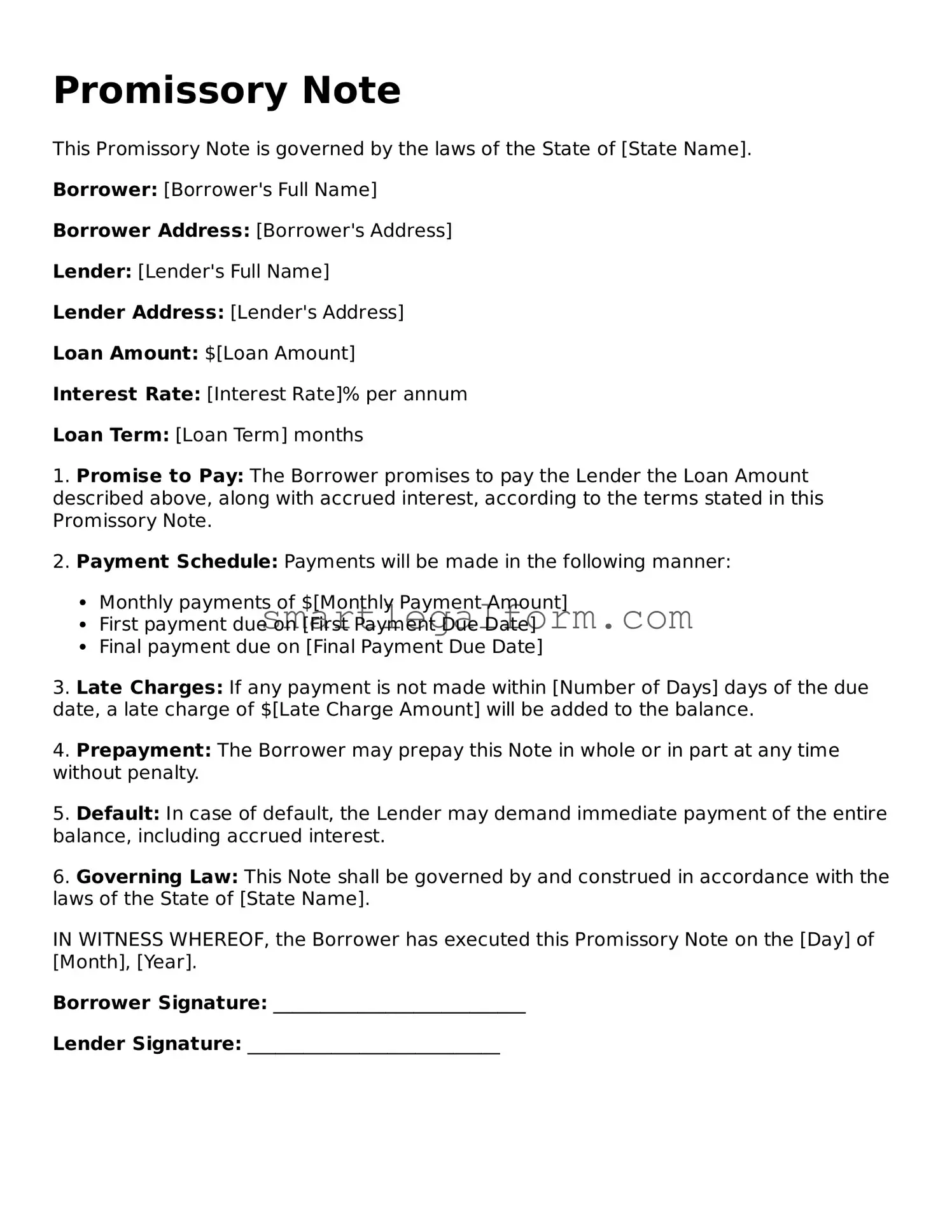Promissory Note
This Promissory Note is governed by the laws of the State of [State Name].
Borrower: [Borrower's Full Name]
Borrower Address: [Borrower's Address]
Lender: [Lender's Full Name]
Lender Address: [Lender's Address]
Loan Amount: $[Loan Amount]
Interest Rate: [Interest Rate]% per annum
Loan Term: [Loan Term] months
1. Promise to Pay: The Borrower promises to pay the Lender the Loan Amount described above, along with accrued interest, according to the terms stated in this Promissory Note.
2. Payment Schedule: Payments will be made in the following manner:
- Monthly payments of $[Monthly Payment Amount]
- First payment due on [First Payment Due Date]
- Final payment due on [Final Payment Due Date]
3. Late Charges: If any payment is not made within [Number of Days] days of the due date, a late charge of $[Late Charge Amount] will be added to the balance.
4. Prepayment: The Borrower may prepay this Note in whole or in part at any time without penalty.
5. Default: In case of default, the Lender may demand immediate payment of the entire balance, including accrued interest.
6. Governing Law: This Note shall be governed by and construed in accordance with the laws of the State of [State Name].
IN WITNESS WHEREOF, the Borrower has executed this Promissory Note on the [Day] of [Month], [Year].
Borrower Signature: ___________________________
Lender Signature: ___________________________
